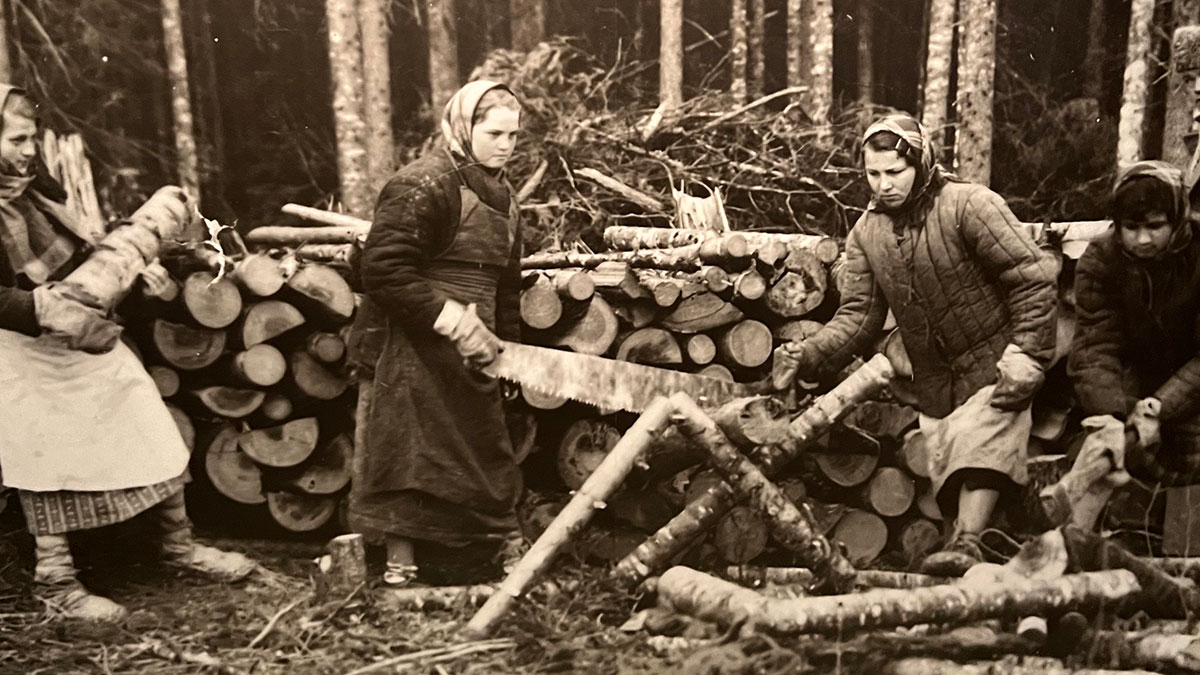"A Deadly Knock at the Door at Night": Hidden Story of Polish-American Victims of Siberia
Dr Nicholas Kinloch February 23, 2025

Eighty-five years ago, in February 1940, a knock at the door in the middle of the night signaled the beginning of the deportation of over one million people from Poland to the Soviet Union.
I was honored to be the guest speaker at an event that raised awareness and commemorated a lesser-known tragedy from World War II.
The deportation of over one million Polish individuals to the Soviet Union took place, and February of this year marks the 85th anniversary of the start of this event.
Many people are aware of the German invasion of Poland in September 1939, which ignited the Second World War. What is less well-known is that the Soviet Union invaded Poland just a few weeks later, occupying the eastern part of the country.
In February 1940, families were roused in the dead of night by Soviet soldiers banging on their doors. At midnight, 1 am, and 2 am, they were forced onto sleds at gunpoint and transported across the snow to the train station, where cattle cars awaited them. Inside, there were no seats, beds, toilets, or windows. There was nothing except a stove in each car, yet no coal ignited it. They were told they would be taken to another village in Poland, but that was untrue. Instead, they were taken to labor camps and gulags in Siberia.
Eighty-five years ago, on the night of February 9-10, 1940, the first mass deportation of Polish citizens into the depths of the Soviet Union began. Brutally torn from their homes on a frigid night, they hurriedly packed what they could in fear before being transported in freight cars to Siberia and Kazakhstan. Many never returned.
(Muzeum Pamięci Sybiru, Białystok)
The train journey lasted for more than a week. Once in a while, they were given watery soup, maybe some bread or cereal. Many died, especially small children and the elderly. Their bodies were just thrown out and left in the snow.
In Siberia, everyone aged 15 or older was put to work. Manual labor like felling trees, digging canals, and laying railway lines. 6 days a week, 12 hours a day. Living in bare wooden huts or barracks, families were often separated. And if you didn't work, you didn't eat. But there was never enough food. Illness was high, and survival was low. More than one million Poles were deported to the USSR between 1940 and 1941.
There are a handful of survivors still alive, living in the USA. They are now in their 90s or older, and around a dozen of them attended the commemoration, along with family members and representatives from the Polish Embassy. They had managed to survive the Siberian labor camps and gulags and had made their way to the USA during the war.
After the war, they were unable to safely return to Communist Poland. They settled in the USA and raised families there. I was sitting next to one of the survivors, who is now 100 years old. He was full of life and reminded me of my grandfather, a deportee.
My grandfather was taken from his home at 15 years old to cut down trees in Siberia. His mother and brother died in the labor camp, but he managed to survive. When the Nazis invaded the Soviet Union in 1941, he embarked on a journey halfway around the world via Kazakhstan, Uzbekistan, the Middle East, and India. He became a paratrooper in Scotland and was dropped off at Arnhem in Operation Market Garden.
At the commemoration, meeting others with similar experiences and shared histories, there was sadness and confusion about why the plight of these victims has not been better recognized and remembered.
It was kept secret during the war because the Soviet Union was an ally, perhaps because it was an uncomfortable truth. The 85th anniversary in February is an appropriate time to recognize these tragic events broadly.
Dr Nicholas Kinloch
Nicholas Kinloch is the grandson of Stanislaw Kulik. Stanislaw's story is told in"From the Soviet Gulag to Arnhem: A Polish Paratrooper's Epic Wartime Journey," written by Nicholas Kinloch and Published by Pen and Sword.
* * *
Explore our captivating photo gallery showcasing the Muzeum Pamięci Sybiru in Białystok, Poland. Whether you're planning a visit or wish to learn more about our unique exhibits, we invite you to contact us. For further details, tour schedules, and inquiries, please visit our website at https://sybir.bialystok.pl/en/
SPONSORED ARTICLE
For the most up-to-date information, please contact the company directly.The photos contained in the article serve only as an illustration of the article.
Galeria
BUSINESS ONLINE CATALOG
